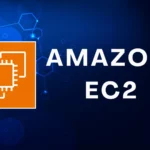
As organizations generate and process vast amounts of data, the need for efficient and scalable data management strategies has never been greater. Two modern approaches—Data Mesh and Data Lakehouse—have emerged as powerful contenders, each addressing the limitations of traditional data warehouses and data lakes. But which one holds the key to the future of data management? Understanding their core principles, strengths, and challenges is crucial for businesses looking to harness data-driven insights effectively.
Understanding Data Mesh: A Decentralized Approach
Data Mesh is a paradigm shift that moves away from centralized data platforms to a decentralized model where data is treated as a product and owned by individual business domains. It emphasizes four core principles: domain-oriented ownership, data as a product, self-serve data infrastructure, and federated governance.
This approach empowers teams to manage their own data pipelines, enabling greater agility and scalability. By distributing data ownership, organizations reduce bottlenecks in data engineering and improve overall accessibility. However, implementing a Data Mesh requires a significant cultural shift, strong governance frameworks, and seamless interoperability between distributed data products.
The Rise of Data Lakehouse: Combining the Best of Both Worlds
A Data Lakehouse integrates the flexibility of data lakes with the structured capabilities of data warehouses, offering a unified data architecture. Unlike traditional data lakes, which often suffer from data inconsistency and governance challenges, a Lakehouse leverages ACID transactions, metadata management, and a unified query engine to ensure data reliability and performance.
This model is particularly beneficial for businesses that rely on both structured and unstructured data, providing a cost-effective and scalable solution. With platforms like Databricks, Snowflake, and AWS Lake Formation, organizations can maintain high-performance analytics while keeping storage costs low. The challenge, however, lies in effectively implementing governance and ensuring seamless integration with existing data ecosystems.
Data Mesh vs. Data Lakehouse: Which One Is the Future?
Both architectures offer compelling advantages, but their suitability depends on an organization’s specific needs. Data Mesh is ideal for companies with complex, domain-driven data ecosystems that require flexibility and distributed ownership. It works well for organizations with mature data governance practices and a strong engineering culture.
On the other hand, a Data Lakehouse is a more practical solution for businesses seeking a centralized yet flexible architecture with robust analytical capabilities. It is particularly beneficial for industries that need structured reporting while still leveraging big data analytics, such as finance, healthcare, and e-commerce.
While neither approach is a one-size-fits-all solution, hybrid models are emerging where organizations adopt a Data Lakehouse for storage and analytics while implementing Data Mesh principles for governance and domain-driven ownership. This fusion provides the best of both worlds—scalability, performance, and decentralized control.
Conclusion: The Future Lies in Adaptability
The future of data management will not be defined by a single approach but rather by the ability to adapt architectures to business needs. While Data Mesh empowers decentralized teams and drives innovation, Data Lakehouse ensures high-performance analytics and efficient data storage. The most successful organizations will likely blend elements of both, leveraging the scalability of Data Mesh with the reliability of Data Lakehouse to create a robust and future-proof data ecosystem.
🚀 As data-driven decision-making becomes more critical than ever, choosing the right architecture will determine how well businesses can harness the power of their data.
Follow us for more Updates













